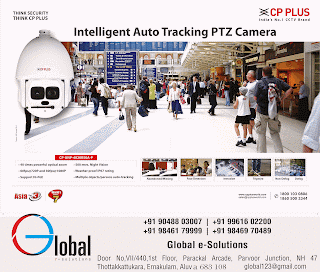IP video technology from Indigovision helps to reduce crime and improve traffic in Chomutov, Czech Republic
 |
| City of Chomutov chose IndigoVision for its low bandwidth requirements and excellent picture quality |
The city of Chomutov in the Czech Republic has chosen a new wide area surveillance system, based on IndigoVision’s IP Video technology, to replace its ageing analogue CCTV system from the 1990s. The new wide-area system is part of the city’s strategy to reduce crime and improve traffic flow monitoring across Chomutov. It provides the city of 50,000 (80,000 in the metropolitan area) with system reliability and security, as well as integrating with the city police’s crisis management software which is linked to it by three Control Centre stations. Control Center is the user interface to IndigoVision’s Security Management Solution SMS4™. The high level of integration has led to improved decision-making and response.
IndigoVision’s low bandwidth requirement and excellent picture quality were key factors in the city choosing its solution, along with the distributed architecture with no need for a central server, and easy back up of the NVRs. Mr David Žažo from MP Chomutov stated: “The new system has transformed surveillance in the city – it’s reliable and completely stable, with unlimited growth potential due to the distributed architecture. The city police can make better, faster decisions with the excellent picture quality now available to them.”
Local IndigoVision partner MKDS Besy s.r.o. installed 32 analogue PTZ cameras, of which two are mobile to create more monitoring options, connected via 32 IndigoVision 9000 encoders. Two Windows NVR-AS Network Video Recorders are in place, with one in operation and one as back up. The system has 4TB of storage capacity with RAID5 resilience.
The two mobile cameras use IndigoVision’s Activity Controlled Framerate (ACF) feature to keep bandwidth requirements low over their Wi-Fi connections. ACF controls the framerate of the video stream based on the amount of motion in the scene. When there is no activity, video is streamed at minimal framerate; the instant any motion is detected, video is simultaneously transmitted at maximum configured framerate to maximise data capture. This significantly reduces the bandwidth and storage requirements for cameras monitoring generally static scenes or during quiet periods such as at night, demonstrating truly responsive technology.





Comments
Post a Comment